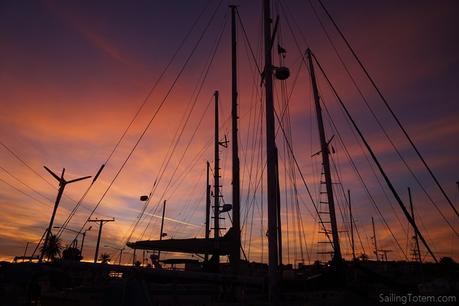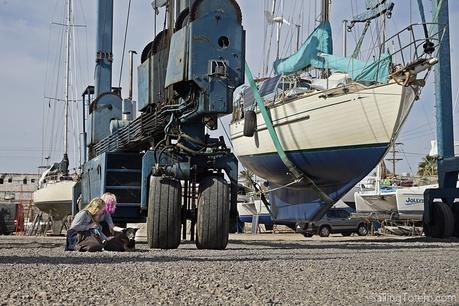

Totem turned 36 this year. We treat her like our forever boat, and prioritize maintenance to ensure our sailboat / home remains a sound vessel with a long future ahead. Lately that means turning attention to a projects that accumulated into something more than “routine maintenance.” While organizing plans for the new bottom (we’ve made a decision on bottom paint, by the way, details coming soon – I am VERY excited about our plans, details coming!), a number of these kicked off.
Step one is simply getting supplies. Some things are easy to get in Mexico; others aren’t. Because Cabrales Boatyard is only an hour and a half south of Arizona, it’s not hard to source from north of the border. There’s even a West Marine in Phoenix! Several other cruisers in the yard are making trips back and forth; we’ve been able to tag along with road trips to get our supplies down, and our friend Michael (my co-author for Voyaging with Kids and Good Old Boat editor) has provided invaluable mailstop support from his home in Arizona, and Pam Wall helped secure good prices all the way from Fort Lauderdale. (Rhetorical question: is it still cruising when you can get an Amazon Prime order?)
While waiting on materials to get the bottom done, Jamie’s tackled power train work. The engine mounts are probably original to the engine; Totem was repowered in 2002.
Old and new, side by side: I think it’s time, what do you think?
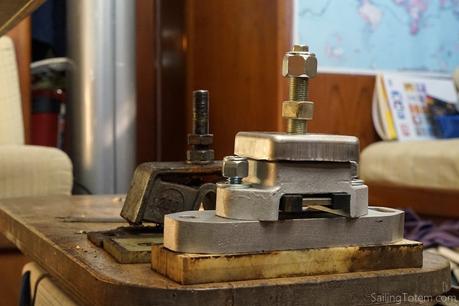
Propeller shaft woes: it’s original, but that’s not the problem. Unfortunately, it seems that it wasn’t sufficiently protected during blasting to remove all paint from the bottom in Grenada last year. The little bit of grit that got inside was enough to cause wear in the shaft in the subsequent miles: that’s gotta go! Jamie’s ordered a new shaft made from Aqualoy 22. I’d never heard of Aqualoy, but it’s an alloy specifically designed for marine environment applications: corrosion resistant and stronger than the comparable grade of steel that would be used for the shaft. That sounds like an excellent “forever boat” choice.

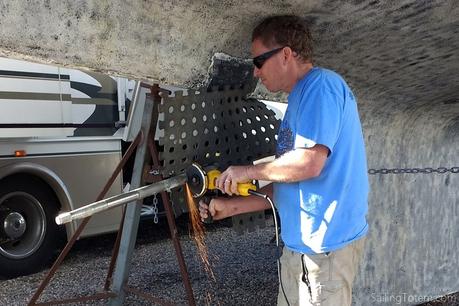
Remember that steerage failure off Colombia? We’re replacing the failed chain, but instead of a stainless cable we’ll use Dyneema. The fix Jamie put into place 4,000 miles ago has proven itself. Additional work on the steering system includes replacing sheave pins and bearings: bushing from Oilite (a bronze alloy) will replace the old bearings, providing lower friction. After 36 years, the stainless pins showed wear, so those will be replaced as well.
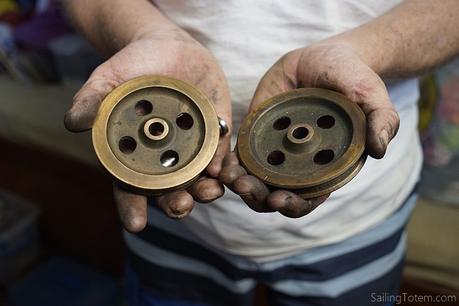
Up at the bow, we’ve long wanted to repair the anchor rollers. They are TOASTED and have been for some time, but the right size rollers never seemed to be on the shelf when we passed through better-supplied chandleries. When Jamie saw the machine shop at the yard, he had an idea; improve on off-the-shelf rollers with a slight change in profile that makes it harder for anchor chain to skip over the top. He purchased cylinders of durable plastic stock ordered from McMaster-Carr (love this resource for boat bits at non-marine-markup prices) and is having the profile machined to order.
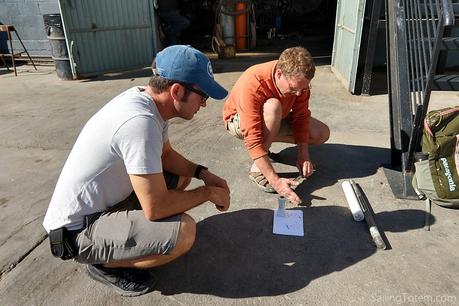

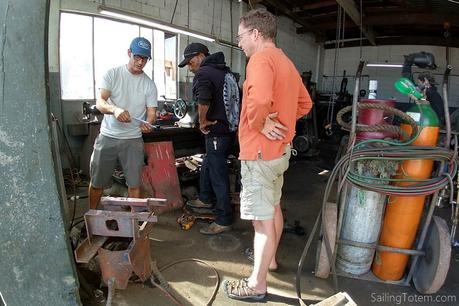
The bow pulpit needs attention too. Like many boats built in the 1980s in Taiwan, mixed quality stainless steel was used for everything from tankage to stanchions. Bit by bit we’ve addressed original stainless components; it’s the bow pulpit’s turn. The feet are cracked. It’s not imminently dangerous, but time to replace, and the skillset and resources are here to do the job at a reasonable rate.
Totem’s swim ladder is another piece of original stainless being improved by the welders at Cabrales Boatyard. The support legs which help our swim ladder stand off Totem’s transom when deployed make for pesky obstacles and chafe risk when raising our dinghy on the davits. It would be nice not to have to finesse that process every time we haul the dinghy and eliminate the risk so those blunt legs have been replaced with a gentle curve that will function much better, and be kinder to the dinghy.
The bare fiberglass bottom is also a great opportunity to clean up Totem’s through hull scene. We replaced most of the 36-year-old seacocks in Thailand five years ago, but a few of the originals remained. Instead of replacing them, Jamie’s removed them. Each divot left by a former through hull is now filled with a large sandwich made up of layers fiberglass and epoxy.
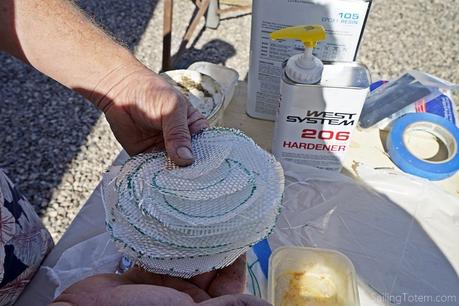
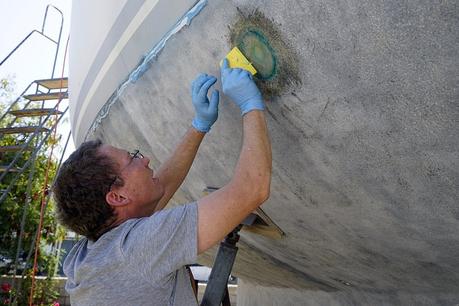
How did we manage to eliminate so many through hulls? Well, one was unused. Two were sink drains which will now drain to a greywater system in the bilge. The fourth is a raw water intake for a toilet, which will use water from a greywater system instead of seawater. We’re happy to minimize holes in the boat, and pleased to have just five for a boat of Totem’s size and layout.
One project that’s more of a luxury item than upkeep of a good old boat is our plan to expand solar charging capacity. Solar power keeps getting more affordable: quality panels are about $1/watt, and we had an opportunity to buy gently used solar panels at an irresistible bargain. A pair will soon come down from Arizona and we’ll increase our capacity from the current 270 to about 650… cost to us about $0.37/watt. SWEET! OK, so it will cost a little more because we’ll need another charge controller: still feeling very good about improving our green power generation.
Meanwhile, Totem looks like there was a small Stuff explosion inside. We had a lot of fine dust to clean out after the summer on the hard: bits that filtered in through solar vents and other crannies.
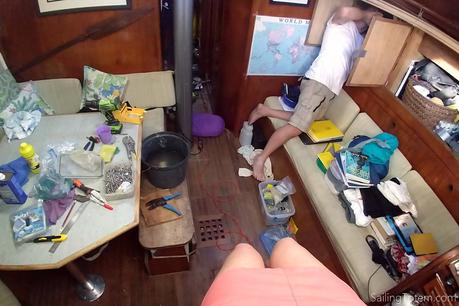
The state of chaos is a sinusoidal wave between “messy” and “chaos” that won’t improve dramatically util projects are done and we’re on our way. That’s OK. The work getting done right now feels really, really good: important steps to ensure the long future life of our floating home.
